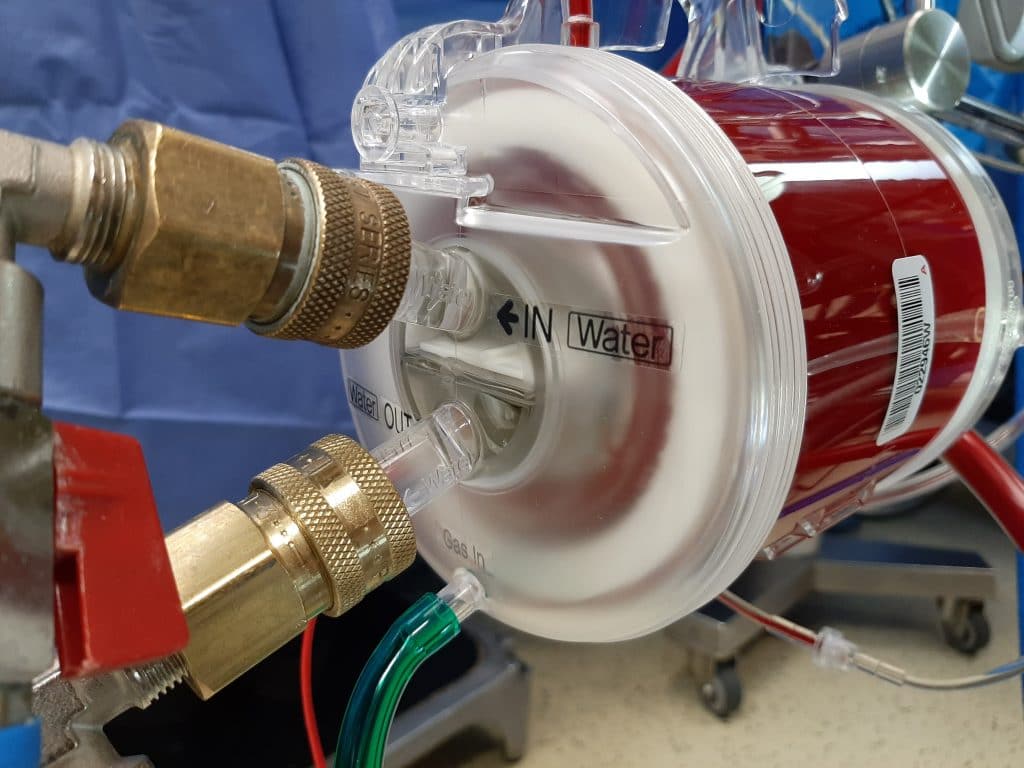Inhaled Nitric Oxide Reduces Injury and Microglia Activation in Porcine Hippocampus after Deep Hypothermic Circulatory Arrest

Objective
Dysregulation of local nitric oxide (NO) synthetases occurs during ischemia and reperfusion associated with cardiopulmonary bypass, deep hypothermic circulatory arrest (DHCA), and reperfusion. Rapid fluctuations in local NO occurring in neonates and infants probably contribute to inflammation-induced microglial activation and neuronal degeneration after these procedures, eventually impairing neurodevelopment. We evaluated the anti-inflammatory efficacy of inhaled NO (iNO) in a piglet model emulating conditions during pediatric open-heart surgery with DHCA.
Methods
Infant Yorkshire piglets underwent DHCA (18°C) for 30 minutes, followed by reperfusion and rewarming either with or without iNO (20 ppm) in the ventilator at the onset of reperfusion for 3 hours (n = 5 per group, DHCA-iNO and DHCA). Through craniotomy, brains were extracted after perfusion fixation for histology.
Results
Plasma NO metabolites were elevated 2.5 times baseline data before DHCA by iNO. Fluoro-Jade C staining identified significantly lower number of degenerating neurons in the hippocampus of the DHCA-iNO group (P = .02) compared with the DHCA group. Morphologic analyses of ionized calcium-binding adapter molecule-1 stained microglia, evaluating cell body and dendritic process geometry with Imaris imaging software, revealed subjectively less microglial activation in the hippocampus of pigs receiving iNO.
Conclusions
Using DHCA for 30 minutes, consistent with clinical exposure, we noted that iNO reduces neuronal degeneration in the hippocampus. In addition, iNO reduces microglial activation in the hippocampus after DHCA. The data suggest that iNO reduces neuronal degeneration by ameliorating inflammation and may be a practical mode of neuroprotection for infants undergoing DHCA.
